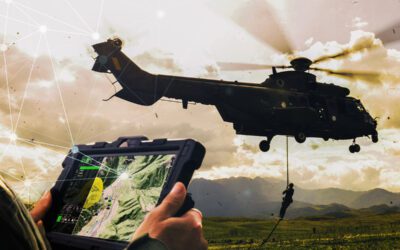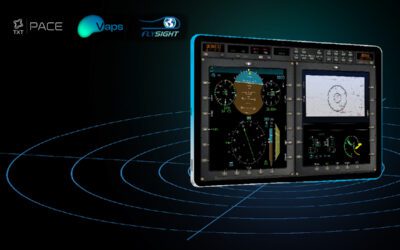For anyone facing a terrifying situation in a remote location, or victims of natural disasters trapped in a devastated urban landscape, three words mean more than anything else – Search And Rescue. SAR operatives are the bravest, most highly skilled and compassionate professionals who are often willing to put their own lives at risk to help others.
Every SAR situation is different, whether it’s a mountain avalanche, the aftermath of a tsunami or earthquake, or even a major terrorist attack. Search and Rescue training is an ongoing process, as teams incorporate new best practice methods as well as specialist equipment. As both the methodology and the equipment advance in complexity, Augmented Reality (AR) is starting to take a key role in SAR training.
In this article, we’ll look at the importance of SAR training, and how advanced training techniques are increasing the chances of mission success, even in the most challenging environments. We’ll also examine the ways that AR can help with SAR training and the types of scenarios where AR can be a highly effective SAR tool. We’ll also introduce you to FlySight’s AR solutions for SAR teams and trainers.
What is SAR training and why is it important?
Search and Rescue training enables teams to constantly update their skill sets when it comes to rescue operations on land, at sea, and in both urban and rural terrain. The ability to respond to fluid conditions quickly and accurately is essential. From the first call for assistance to getting SAR teams to the search area quickly, pinpointing key locations and refining the search area are all processes that have to be rehearsed. The purpose of SAR training is to streamline the process, reduce response times, and successfully locate and evacuate casualties.
SAR training includes a variety of skills such as basic life support training and CPR, and a certain level of medical training. Incident management is vital, especially in a changing environment where search and rescue parameters may be constantly shifting.
Navigation and traversing dangerous, unstable or hazardous terrain is important to prevent potential injuries to the SAR team members, as well as minimising any physical impact on recovered casualties. And finally, ground and air operations need to be coordinated by command centres utilising the most up-to-date information and constant location and situational updates from the SAR crews.
All of this takes a great deal of practice to execute successfully, and in recent years new technology has helped to fine-tune Search and Rescue training on all levels. Incorporating the use of drones to working with Augmented Reality software to identify areas that may have undergone dramatic changes due to bombardment or natural disasters can all help to save lives. And that is the fundamental goal of all SAR missions.
Search and rescue in 2023 – How advanced training techniques are increasing mission success rates
While there is never any substitute for a highly-trained and compassionate SAR team, what has changed over the years has been the advanced training and methodologies that are used to improve mission success rates. In many cases, this involves training teams on the use of new equipment and software that can improve the chances of a successful outcome. At the top of the pile has been AR or Augmented Reality – a system that works in conjunction with both military and civilian SAR operations.
AR is a potential game-changer. The deployment of drones fitted with AR software can give command units greater access to real-time information, with the use of AR putting that information in context to improve and enhance the operation parameters. For example, if several buildings have been destroyed or toppled in an earthquake, a fly-over with multi-spectral cameras overlayed with AR mapping can tell operators where the original position of each building was, and how many potential casualties there may be through the additional street-plan information offered by AR.
Video footage of an area can be feedback to the control hub in real-time, overlaid with geospatial information programmes that could include vital data such as the position of gas pipelines or overhead power cables. This information is critical for airborne units and ground personnel to ensure that both responders and their air platforms are not put at risk.
Even the most complex on-the-ground situations can be clarified by utilising this type of technology. The end result is that SAR teams have a greater chance of locating and retrieving casualties.
The type of SAR training involved in these scenarios can be made much easier if the technology being used is intuitive and even uses equipment and hardware that is already familiar to the user. To this end, organisations that are developing AR equipment for SAR teams are more inclined to work on ‘plug-and-play’ software using touchscreens and familiar hardware. Not only does this shorten the training time, but it makes it much easier for airborne teams in particular to refine their responses in high-pressure situations.
How can augmented reality help with search and rescue training?
While AR has an effective role to play in SAR missions, it can also be used in search and rescue training. Simulation training and the use of VR headsets interconnected with AR software can give classroom training a whole new dimension, making each training session far more realistic.
The scenarios presented can be specially programmed to be adaptive depending on how trainees respond to the stimulus and information presented, mimicking the fluid nature of a true SAR mission.
The ability to review responses and learn from each one is also important. This allows trainers to spot where SAR teams may need to refine their responses, and also suggest if additional training on the equipment used is required.
All of this produces a more effective and efficient SAR operation that has a far greater chance of success, regardless of the conditions and unique challenges they may encounter.
An overview of Flysight’s augmented reality solution
With Search and Rescue training, the key is to find a balance between the instincts and skill of the team members, and the implementation of advanced technological equipment that has real benefits on the ground. OPENSIGHT Mission Console’s groundbreaking Augmented Reality System achieves such a balance, delivering intuitive, reactive AR that can be enabled to work within any scenario.
Used for both military and civilian SAR operations, OPENSIGHT’s AR increases awareness in any situation by incorporating selectable layers and 3D rendering. This gives a factually accurate picture of the area being surveilled, even in crowded or complex urban environments.
It can spot changes using multispectral analysis that could indicate voids, for example, where casualties may be trapped underneath a collapsed building. Or it can be used to identify a specific target that may need to be extracted under extreme conditions, helping to narrow down the search to a single moving vehicle.
OPENSIGHT’s AR allows you to monitor everything from crowds and buildings to traffic control and disaster zones in minute detail. This can assist in evacuation management, Search and Rescue missions, or surveillance operations.
The complexity of AR has been refined down to programmes that can be easily integrated into existing SAR hardware, fitting in with protocols and enhancing the operational standards of both ground-based and airborne units.
You can find out more about how AR works by reading our article on Mobile phone detection, location and communication systems in airborne Search and Rescue or by visiting our success stories page and learning more about the technological advances being made in this fast-moving and vital sector.





